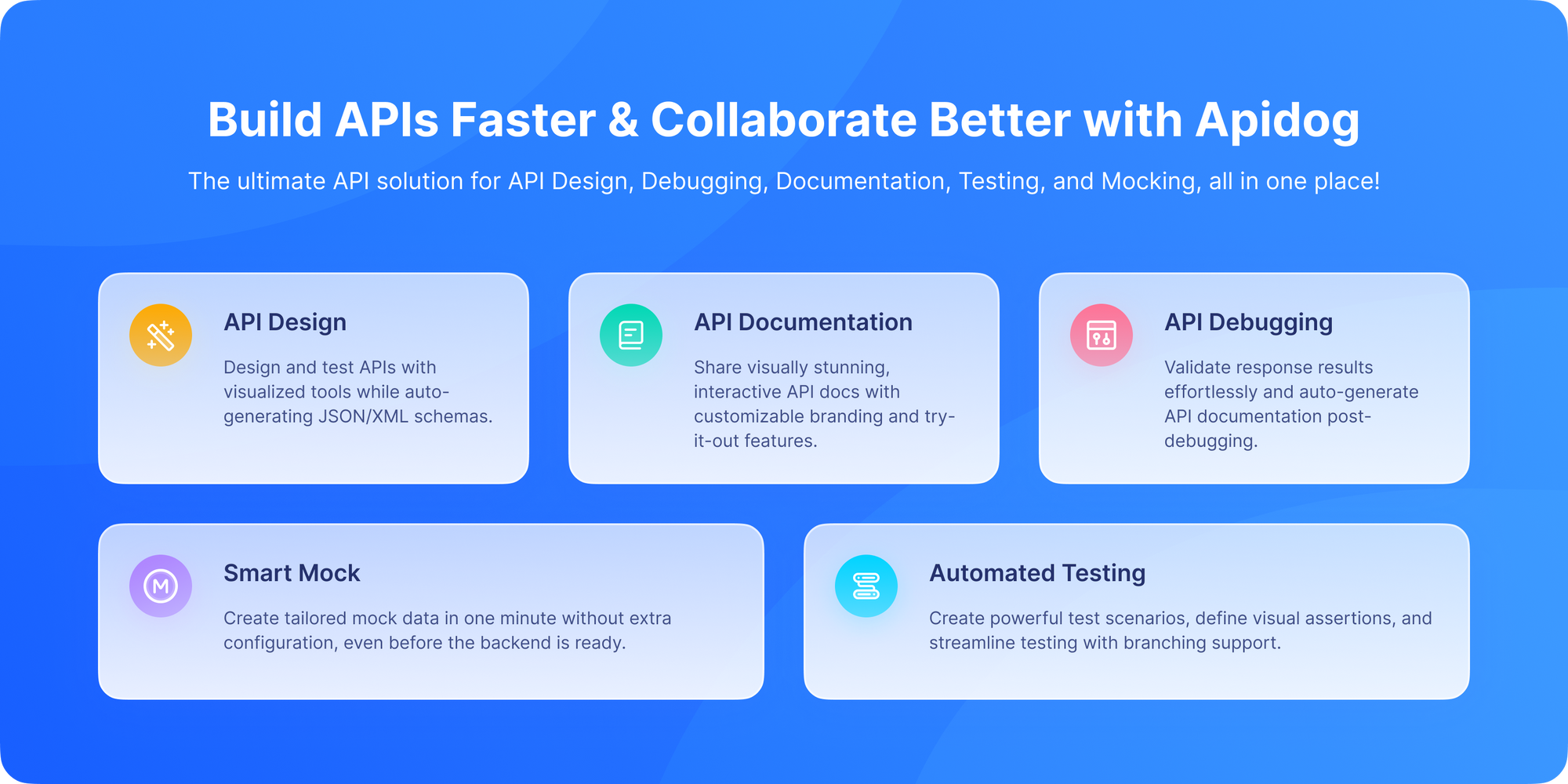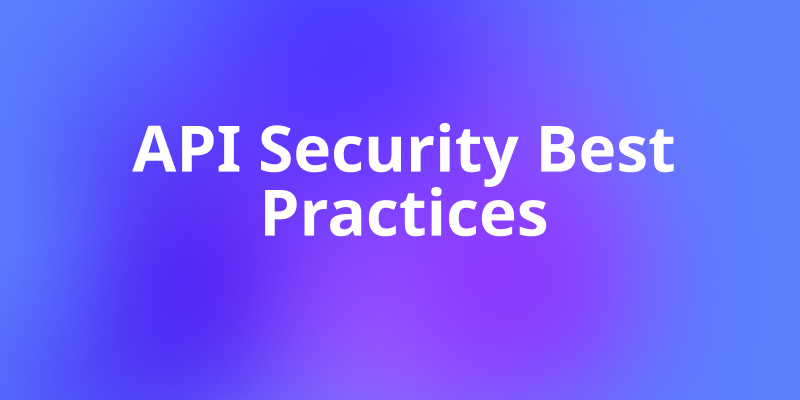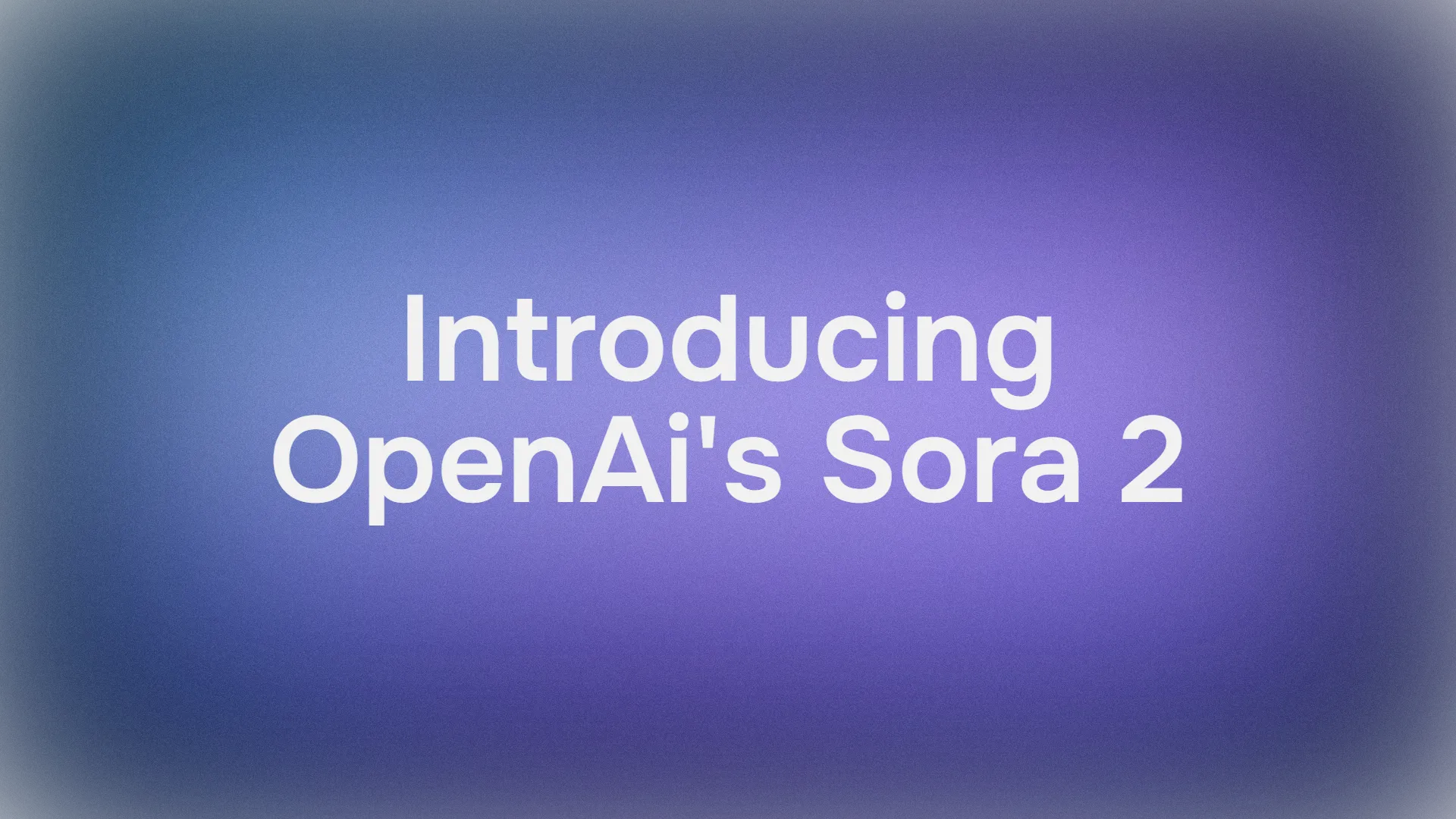APIs are the glue that holds modern digital systems together, connecting applications, from mobile apps and web platforms to IoT devices and AI integrations in seamless ways. But here’s the thing: the more connected we get, the more vulnerable our APIs become. However, with this increased connectivity, the importance of API security cannot be overstated.
If you’re building, managing, or even just consuming APIs, security should be at the top of your checklist. A single vulnerability can compromise sensitive data, disrupt services, and even harm your brand’s reputation.
In this blog post, we'll explore API security best practices in a conversational tone, guiding you through everything you need to know to safeguard your APIs effectively. Plus, I'll introduce you to a powerful tool called Apidog that can help streamline your API security testing.
Want an integrated, All-in-One platform for your Developer Team to work together with maximum productivity?
Apidog delivers all your demands, and replaces Postman at a much more affordable price!
So, let’s dive in and don’t worry, we’ll keep this practical, easy to follow, and jargon-light (while still geeking out where it counts).
Why API Security Matters More Than Ever in 2025
In simple terms, API security refers to the measures and practices put in place to protect APIs from malicious attacks, unauthorized access, data breaches, and abuse. APIs power everything from mobile apps to cloud services, and any vulnerability can lead to significant damage such as data theft, service downtime, or reputational loss.
If you’ve been paying attention to the headlines, you’ve probably noticed:
- Data breaches are getting more frequent.
- Attackers are targeting APIs directly.
- Even big companies with massive security budgets are not immune.
The API economy is booming but so is the cybercrime industry. In fact, Gartner predicts that by 2025, APIs will be the top attack vector for web applications.
Here’s why APIs are so tempting for attackers:
- They often expose direct access to sensitive backend systems.
- APIs are always on, making them available for continuous probing.
- Developers sometimes prioritize speed over security.
- Many organizations don’t have proper API monitoring in place.
With APIs becoming more integral than ever, thinkers and doers in tech communities constantly focus on adopting best practices to keep them locked down. So, let’s walk through these best practices that not only secure your APIs but also ensure smooth, trustable interactions.
Key API Security Best Practices
1. Use Strong Authentication and Authorization
Authentication tells you who someone is; authorization tells you what they can do. Authentication is your first line of defense. Weak authentication is basically an open invitation to attackers.
Authentication verifies the identity of a user or system; authorization determines what they are allowed to do. Here’s how to nail it:
- Employ OAuth 2.0 or OpenID Connect: These are widely adopted frameworks offering secure and flexible authentication.
- Use API keys wisely: Never expose API keys publicly.
- Implement Role-Based Access Control (RBAC): Restrict user and application permissions based on roles to minimize risks.
- Consider Multi-Factor Authentication (MFA): Adds extra layers of verification.
2. Encrypt Data in Transit and At Rest
Data encryption isn’t just for transit, encrypt stored data too.
Encryption ensures data is unintelligible to unauthorized parties:
- Use HTTPS exclusively: Enable TLS to securely encrypt data between clients and servers.
- Encrypt sensitive data stored in databases or backups to prevent leaks.
- Use AES-256 or stronger for encryption at rest.
- Store keys in secure vaults (AWS KMS, HashiCorp Vault, etc.).
- Mask sensitive fields in logs (e.g., passwords, credit card numbers).
3. Validate All Inputs and Sanitize Outputs
APIs are frequent targets of injection attacks. If an attacker can send malicious data to your API, they can exploit it to:
- Execute SQL injection.
- Trigger buffer overflows.
- Crash your system.
Best practices:
- Validate input types, lengths, formats: Never trust incoming data blindly.
- Sanitize output to avoid data leakage or injection risks.
- Reject anything unexpected (whitelisting is safer than blacklisting).
4. Implement Rate Limiting and Throttling
No matter how good your authentication is, you need rate limiting to stop brute-force attacks, credential stuffing, and denial-of-service attempts.
- Set thresholds for API requests per client.
- Use API gateways (like Kong, AWS API Gateway, or Apidog’s proxy testing features) to enforce limits.
- Combine with IP throttling or device fingerprinting for more precision.
- Automatically block suspicious or excessive traffic by return standard error codes like
429 Too Many Requests.
5. Use API Gateway for Centralized Security Management
API gateways offer built-in controls including authentication, rate limiting, logging, and monitoring, making it easier to secure and manage APIs at scale.
API gateways act as traffic cops for your API. They can:
- Enforce authentication and authorization.
- Block malicious IPs.
- Apply rate limiting.
- Log and monitor traffic.
Popular gateways include Kong, Apigee, AWS API Gateway, and Azure API Management. Apidog complements gateways by testing endpoints before they’re deployed, ensuring they follow your security rules.
6. Keep APIs and Dependencies Updated
Outdated software or APIs are security liabilities and a playground for attackers. If you’re still running API v1 from 2016, you’re inviting trouble.
- Regularly patch API software and libraries.
- Monitor for vulnerabilities in third-party services.
- Use semantic versioning (
v1,v2, etc.) in your endpoints. - Deprecate old versions and communicate timelines to users.
- Patch vulnerabilities immediately.
7. Monitor and Log API Activity
Security without visibility is like locking your door but never checking who comes in. If you don’t detect an attack early, the damage multiplies.
Real-time monitoring and logging help detect anomalies and respond faster:
- Capture logs of all API requests and responses.
- Use alert systems for unusual behaviors.
- Log authentication attempts, failed logins, and unusual activity.
- Use centralized logging tools like ELK stack or Datadog.
- Avoid storing raw sensitive data in logs.
8. Conduct Regular Security Testing
Security isn’t a set-and-forget task. It's an ongoing process:
- Use static and dynamic testing tools.
- Perform penetration testing and vulnerability assessments regularly.
This is where Apidog really shines! You can use Apidog to automate API testing, making your workflows faster and more reliable. Apidog integrates API testing directly into your CI/CD pipeline.
9. Avoid Overexposing Data
Sometimes developers return too much data in API responses, making life easier for attackers.
- Use response filtering or field selection.
- Only return the minimum required data.
- Avoid exposing internal IDs or system information.
10. Follow the Principle of Least Privilege
If a microservice only needs read access, don’t give it write access.
This applies to:
- Database queries.
- API keys.
- Third-party integrations.
11. Protect Against Injection Attacks
Injection flaws remain one of the most common API vulnerabilities.
- Use parameterized queries.
- Escape special characters.
- Avoid dynamic code execution when possible.
12. Secure API Keys Properly
API keys are like passwords, treat them with respect.
- Store them in environment variables, not in code.
- Rotate keys regularly.
- Revoke unused or compromised keys.
13. Educate Your Team
The best security tools won’t help if your team doesn’t know how to use them properly.
- Provide regular security training.
- Encourage secure coding practices.
- Share updates about emerging threats.
How Apidog Enhances Your API Security Workflow

Apidog is designed as a comprehensive API testing and management platform.
- Automated tests: Run tests for authentication, rate limiting, and input validation effortlessly.
- Collaborative environment: Team members can share and review test cases, ensuring security checks are thorough.
- Detailed reports: Identify vulnerabilities with clear, actionable insights.
- Integration capabilities: Easily fits into your CI/CD pipelines for continuous security checks.
Downloading Apidog early in your API development lifecycle means fewer surprises later on.
Bonus Tips for API Security You Shouldn’t Ignore
- Use JSON Web Tokens (JWT) carefully: Keep tokens short-lived and securely signed.
- Avoid verbose error messages: Don’t reveal technical details that help attackers.
- Restrict Cross-Origin Resource Sharing (CORS): Allow only trusted domains to access your APIs.
- Plan for incident response: Have clear procedures ready if a breach happens.
Wrapping It Up: Security Is a Journey, Not a Destination
API security is an ongoing process. Threats evolve, your APIs evolve, and so should your defenses.
By combining strong fundamentals (like HTTPS, authentication) with advanced practices (like continuous monitoring, automated testing with Apidog, and strict data minimization), you can drastically reduce your risk.
Securing APIs is no small feat, but by following these API security best practices, you’re well on your way to creating a resilient and trustworthy digital environment. Remember, security is a continuous journey, not a one-time setup.
And don’t forget, download Apidog for free today to empower your API security testing. It’s the tool that can help you catch vulnerabilities early, ensure compliance, and enhance collaboration across your team.



